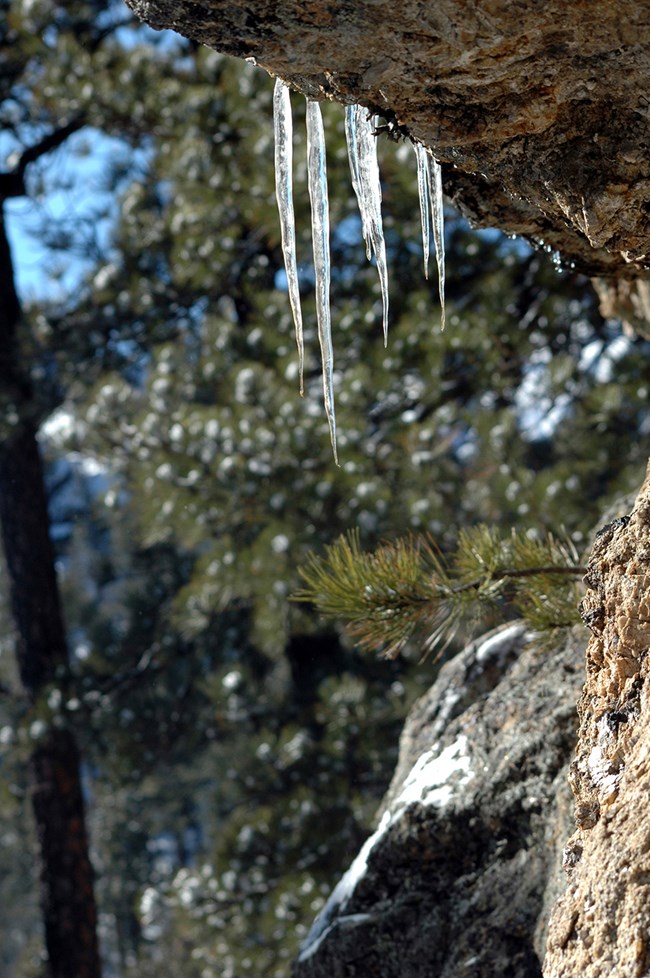
NPS Photo The average annual precipitation for Mount Rushmore National Memorial and much of the surrounding Black Hills is approximately 18 inches. By comparison, Death Valley National Park, one of the driest places in the United States, receives only 1.92 inches annually. One of the wettest places in the United States, the Hoh Rainforest of Olympic National Park, receives 133 inches each year. Though the Black Hills receive many times the amount of precipitation that Death Valley National Park receives, life is not sustained here by that precipitation alone. Groundwater is necessary for all life in the Black Hills, including humans. Precipitation that falls on the Black Hills around Mount Rushmore, where the elevation is nearly 3,000 feet higher than the surrounding plains, soaks into the ground through porous rocks. The main water carrying rock formation near Mount Rushmore is mica schist. Precipitation that falls here is slowed by extensive tree and plant cover. This helps to control runoff and encourages filtration of the water down into the broken and fractured mica schist. Around Mount Rushmore, plant and animal life, as well as humans, rely on groundwater. A well provides drinking water for the people who live and work at Mount Rushmore National Memorial, as well as those who visit. Groundwater sometimes reaches the surface on its own through fractures in the rock layers, forming seeps and springs. These seeps and springs supply creeks and small pools that are important water sources for wildlife. Plants with deep roots, especially trees, are able to reach groundwater where the water table is near the surface. The Black Hills are an area of "recharge," which means that some of the precipitation that falls here soaks into the ground and follows porous rock layers downhill away from the Black Hills. Numerous layers of sandstone and limestone carry groundwater beneath many northern plains states that originally fell in the Black Hills. Recharge areas are important areas, what happens in them, such as human population increases, resource development, and periodic drought can affect the quality and quantity of groundwater over large areas. The very thing that made the area popular with early settlers, mining the Black Hill's rich mineral resources, also endangers water quality. As human populations increase, the need for additional water for drinking, household use and irrigation all take water from groundwater aquifers. Aquifers have a finite amount of water that they receive each year. Using more water than the aquifer receives from recharge each year can cause the aquifer to be drawn down, or potentially someday be used up. By using water wisely, we can help to prevent this.
Get involved with your community, set an example for others to follow. Let your local, state and federal officials know that clean water is important for your community. Every little bit helps. |
Last updated: January 23, 2023
